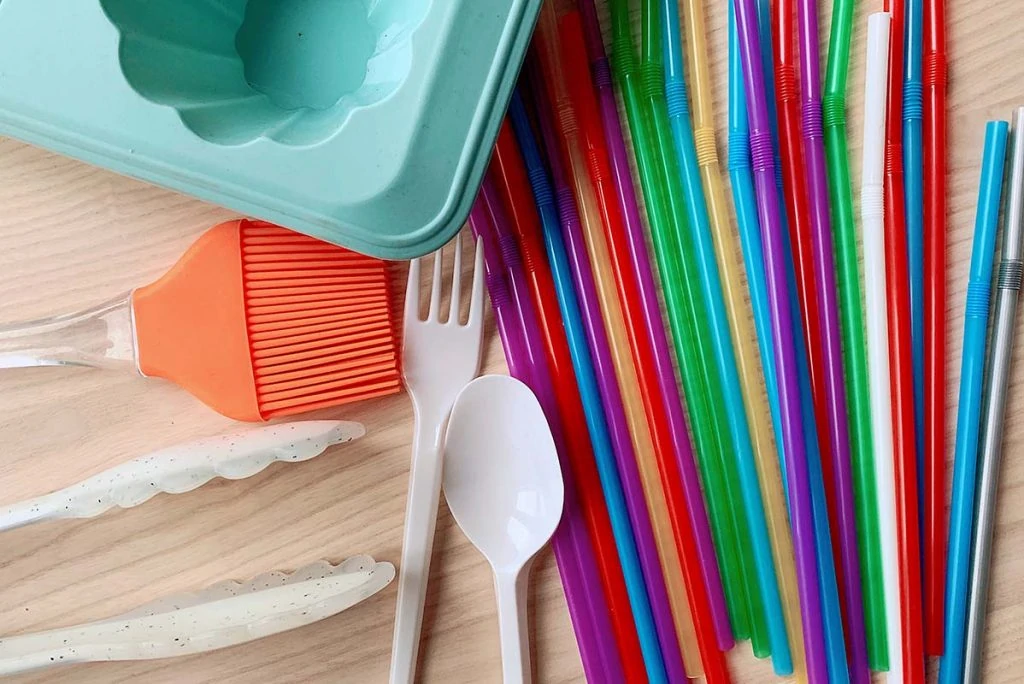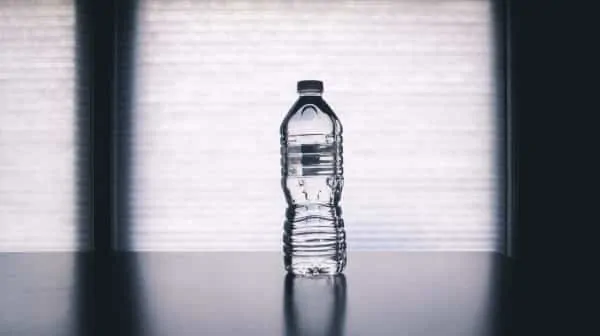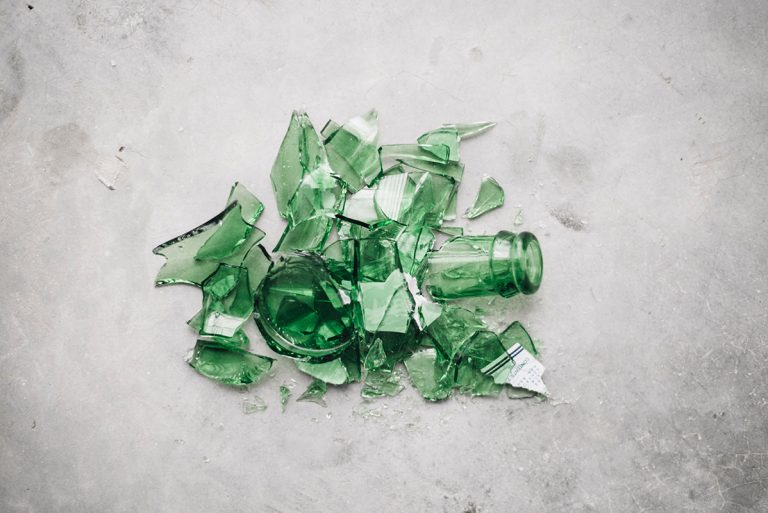From bakeware to baby products, our homes are full of silicone items, but you might be wondering – can you recycle silicone? The short answer to this question is yes, but it’s not easy.
Read on to learn about how you can recycle silicon, and what you can do instead if you want to be more eco-friendly.
Is silicone recyclable, and is it eco-friendly?
As we’re becoming more conscious of the environmental issues associated with plastic, consumers are increasingly looking for alternatives. Silicone seems to be the perfect solution: it is durable, lightweight, water-repellent, and capable of withstanding both extreme hot and cold temperatures, but is silicone really an eco-friendly alternative to plastic?
Silicone is a synthetic material made from silicon, oxygen, carbon, and hydrogen, as opposed to silicon, a naturally-occurring chemical element. This material can be recycled, but only through specialized facilities.
You’re unlikely to be able to recycle silicon items curbside, and will probably struggle to find a recycling center near you that will accept it.

In contrast, certain types of plastic can be easily recycled through your local curbside recycling program, such as #1 plastic and #2 plastic, both typically used for shampoo bottles, cooking oil bottles, peanut butter jars, and pharmaceutical bottles.
However, not all plastic is recyclable. For example, #5 plastic, commonly used to make food containers, is virtually impossible to recycle.
This recyclability makes silicon, in general, arguably more eco-friendly than plastic. Additionally, silicone typically stays as large pieces, as opposed to many types of plastic that quickly break down into tiny pieces and microplastics that are easily ingested by animals.
Microplastics can also infiltrate the water table, eventually making their way into our organs and bloodstream.
Finally, silicone products are highly durable, and if you look after them, you can expect these items to last a lot longer than plastic alternatives.
Silicone is also a better choice health-wise. Not only can it be treated to take on antimicrobial properties, but high-quality, food grade silicone that doesn’t contain chemical fillers has a low risk of leaching toxic chemicals into your food, unlike plastic.
Which is more eco-friendly, plastic or silicone?
| Plastic | Silicone | |
|---|---|---|
| Recyclable | Yes, but only some types | Yes, but only at specialized facilities |
| Biodegradable | No | No |
| Breaks down into small pieces | Yes | No |
| Long-lasting | No | Yes |
| Safe for food containers | No | Yes |
However, this doesn’t mean that silicone is an eco hero. There are a number of environmental issues associated with silicone, including:
- It is not biodegradable – in fact, its heat-resistant properties mean that it can take even longer than plastic to break down. A single piece of silicone can take hundreds of years to break down.
- Although this material is technically recyclable, as an individual, it’s pretty challenging to find somewhere to recycle silicone items.
- It is made using petroleum and natural gas, both finite fossil fuels that are usually obtained using environmentally-damaging extraction processes.
If you want to protect the environment, you should look at truly eco-friendly alternatives like glass, porcelain enamel, and stainless steel. Take a look at our guides to plastic-free food storage containers and non-plastic sippy cups for some ideas!
How to recycle silicone
Generally, municipalities do not accept silicone as part of their curbside recycling programs, and most recycling centers won’t take it either. However, if you’re willing to put in the effort, there are a few other ways you can recycle or reuse silicone to avoid it from clogging up landfill for literally hundreds of years.
Recycle silicone through a specialized recycling center
Most recycling centers don’t have the necessary equipment to handle silicone, but there are some specialized facilities that do, such as Harmony Recycling and Eco USA Recycling. However, most of these facilities only accept bulk quantities and generally work directly with silicone manufacturers.

Your best bet is to contact your local sanitation department and ask them if there are any options for recycling silicone in your area. You could also use a mail-in program like Terracycle, but note that you’ll need to pay a fee for this kind of service.
On the upside, you can ask your friends and family and gather up all kinds of silicone items to fill a mail-in box and get the best return on the fee.
Recycle silicone products back to the manufacturer
Some companies offer silicone recycling programs, though they usually only accept products from their own brand.
For example, you can mail in your old Simple Ecology cookware and the company will arrange for it to be recycled. However, the program does not accept outside products. Stasher has a similar program to recycle their bags.

You can get in touch with the manufacturer of the silicone product you want to recycle and see if they run a similar program.
Can you recycle silicone yourself?
Believe it or not, you can actually recycle and repurpose silicone yourself at home with basic equipment and just a few special supplies. With it being so difficult to find somewhere to take your old silicone items for recycling, this is a great way to turn them into new products.
Keep in mind that silicone comes in varying levels of hardness, and soft silicone is easier to recycle yourself. You can recycle harder types of silicone yourself, but you may need more specialized equipment to grind it down.
Here’s how to recycle silicone at home:
What you’ll need:
- Fresh silicone – you can buy this online in liquid form
- Scissors, a craft knife, or a kitchen grinder
- A mold of some kind
- A hardening or setting agent
Steps to follow:
- Grind down the silicone with a kitchen grinder (for hard silicone) or shred it into small pieces with scissors or a craft knife (for soft silicone).
- Prepare a mold – you can use something like an empty bowl or box depending on the shape of the item you want to make.
- Mix the shredded with fresh silicone. Avoid using too little fresh silicon with your recycled pieces, as this can make the final product less durable.
- To finalize the process, you need to solidify the silicone. When silicone is recycled at an industrial facility, this is done by either catalyzing, vulcanizing, or injection molding the silicone. At home, the simplest way is to use a silicone molding kit that contains a hardening or setting agent.
Reuse your silicone items
Depending on the type of item you have, you may be able to reuse it. If you have silicone items that are in good condition, you could donate them to charity or give them to friends or family members that may have a use for them.
The ways you can reuse silicone items very much depends on the type of item. It would be near impossible to list them all here, but to get you going – here are some ideas for how to reuse old silicone bracelets:
- For extra grip, such as to open tight jars by wrapping the bracelet around the lid.
- Organize your cables and other loose items by tying them with silicone bracelets.
- Secure plants at tree saplings to garden stakes.
- Wrap them tightly around hoses and pipes to seal leaks.
These are just a few examples of how one simple silicone item can be reused to serve a number of different purposes.
Silicone: recycle, reuse, or opt for an eco-friendly alternative
Silicone can be recycled, but, in practice, this is fairly difficult to do. Unless you’re willing to recycle it yourself at home or can find a specialized recycling center that accepts smaller quantities, you’ll either need to recycle it through the manufacturer or a mail-in program.
Some silicone items can be reused or repurposed, but this is not the case for all products.
Given these constraints, it’s best to avoid silicone and plastic as much as possible. Instead, you can opt for more eco-friendly alternatives such as glass, ceramic porcelain, or stainless steel.
Want to know how to recycle other tricky materials? Take a look at our guides to recycling books and magazines, old shoes, and pillows.











